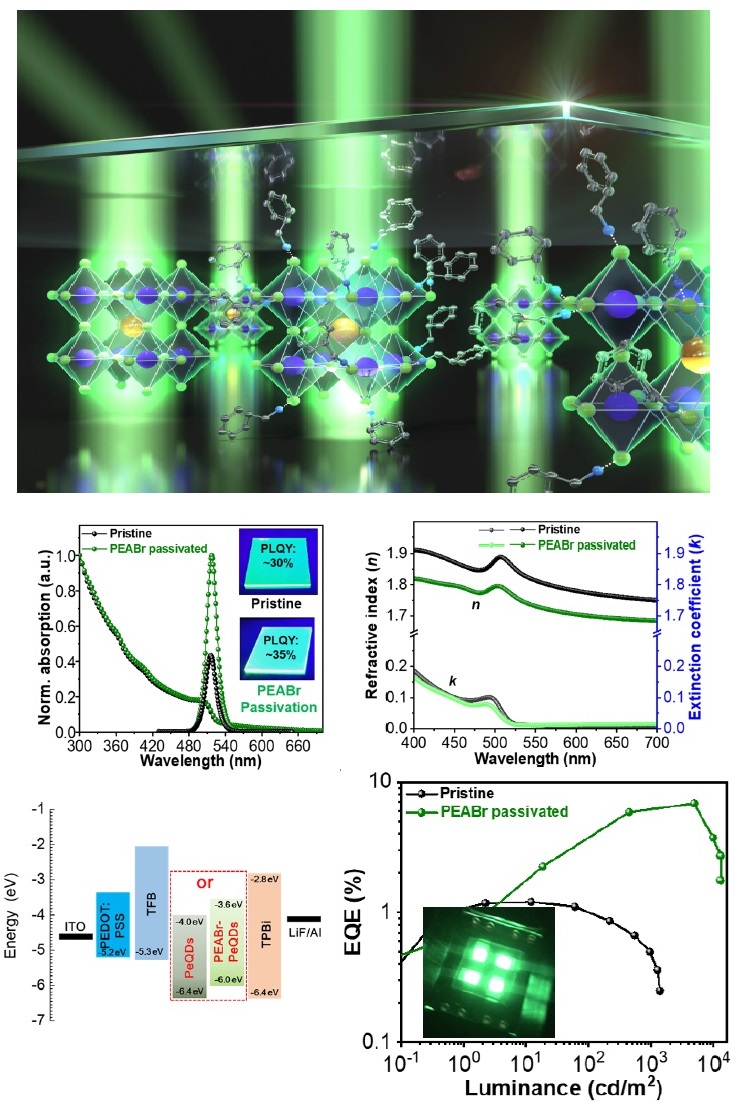- 작성일
- 2022.11.14
- 수정일
- 2022.11.14
- 작성자
- 강재욱
- 조회수
- 65
(161) S. He, N. Kumar, H.B. Lee, K.-J. Ko, Y.-J. Jung, J.I. Kim, S. Bae, J.-H. Lee*, J.-W. Kang* “Tailoring the Refractive Index of CsPbBr3 Quantum Dots via Alkyl Cation-Engineering for Efficient Perovskite Light-Emitting Diodes” Chem. Eng. J. 425, 130678 (2021).

- 첨부파일
- 첨부파일이(가) 없습니다.
- 다음글
-
(162) M.M. Ovhal, N. Kumar, H.B. Lee, B. Tyagi, K.-J. Ko, S. Boud, J.-W. Kang* “Roll-to-Roll 3D-Printing of Flexible, Transparent, All-Solid-State Supercapacitor” Cell Reports Physical Science 2, 100562 (2021).강재욱 2022-11-14 20:01:18.0
- 이전글
-
(160) H.B. Lee, N. Kumar, B. Tyagi, S. He, R. Sahani, J-W Kang* “Bulky Organic Cations Engineered Lead-halide Perovskites: A Review on Dimensionality and Optoelectronic Applications” Mat. Today Energy. 21, 100759 (2021).강재욱 2022-11-14 18:46:31.0